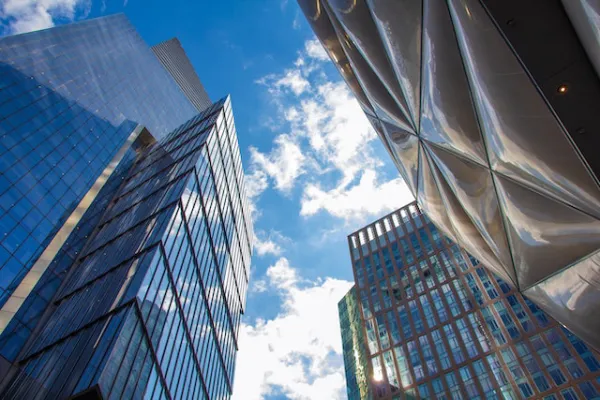Think about the homes you see, the tall buildings that touch the sky, and even the cozy little cottages in the countryside.
Have you ever wondered how many of these buildings are there all around the world? Get ready to go on an exciting adventure to find out!
In this journey, we’ll explore the amazing world of buildings. We’ll find out the big number of buildings that exist on Earth and why they matter.
From the old buildings with stories to tell to the new ones that show progress, each building has a special tale.
So, hold on tight as we dive into this mystery, and discover the magic hidden within the world of buildings!
A World of Structures Unveiled

The world is a canvas painted with an incredible variety of buildings. These structures house our homes, schools, offices, and so much more.
From towering skyscrapers to cozy cottages, each building has a story to tell.
Building by the Numbers

So, how many buildings are there in the world? The answer might surprise you! An estimated 100 million buildings dot our planet’s landscapes. But wait, there’s more to this story!
A Rapidly Growing Skyline
The number of buildings is not a fixed figure; it’s a dynamic tapestry that keeps changing. In recent years, the world has witnessed a rapid surge in building construction.
This growth is like a symphony of change playing across cities and towns.
A Glimpse into the Future

The skyline’s evolution doesn’t stop here. Experts predict that by 2050, a staggering 1.6 billion new buildings will be constructed, making the global count reach a mind-boggling 2.6 billion. Imagine a future where cities and landscapes transform before our eyes.
The Shifting Sands of Numbers
As exciting as these numbers are, it’s important to note that they can shift like sand in the wind. The world is a dynamic place, and buildings can be built, renovated, or demolished, altering the overall count.
Cities in Focus: Tracking the Urban Landscape
Zooming in on cities, we find bustling urban landscapes that contribute significantly to the number of buildings.
By 2022, it was projected that New York City alone will have around 849,407 buildings. This shows the sheer scale of growth within a single metropolis.
The Magic Behind the Numbers
Have you ever wondered how experts estimate these numbers? One way is to track Building Use Areas (BUAs).
If the number of buildings is directly proportional to the number of BUAs, we can make educated guesses about the future count.
A World of Possibilities
In the ever-changing world of buildings, possibilities are endless. Each structure represents dreams, innovation, and the human spirit’s desire to create.
Whether we’re marveling at an ancient cathedral or a modern marvel, buildings remind us of the beauty of human ingenuity.
In the journey to unravel the enigmatic question of how many buildings populate our world, we’ve delved into a realm that bridges the present with the promise of the future.
The tally of these structures isn’t just a number; it’s a testament to human creativity, ambition, and the way we shape our surroundings.
From the towering skyscrapers that scrape the sky to the quaint cottages nestled in serene landscapes, each building narrates a story—a story of dreams and aspirations woven into bricks, concrete, and glass.
Our world is an ever-changing canvas painted with a palette of buildings, each one a brushstroke contributing to the masterpiece of civilization.
The count of buildings, while staggering at an estimated 100 million globally, is a dynamic figure.
With an exponential growth rate, the skyline of our cities and towns transforms in ways that our predecessors could scarcely imagine.
The towering edifices that reach for the heavens and the cozy abodes that offer refuge from the world remind us that change is the heartbeat of progress.
Looking forward, the projection of 1.6 billion new buildings by 2050 adds a thrilling chapter to the narrative of human ingenuity.
As we navigate this uncharted terrain, we recognize that these buildings are more than just structures—they are the milestones of our journey into the future.
They house our innovations, our breakthroughs, and our aspirations for a better tomorrow.
Yet, the world of buildings is a fluid landscape, where numbers shift like grains of sand in the wind.
Buildings rise and fall, transforming the count with each construction, renovation, and demolition.
This ever-changing dynamic echoes the ebb and flow of human history, reminding us of our constant evolution.
The urban centers, where the hustle and bustle of life is concentrated, stand as a testament to our collective endeavors.
With projections hinting at nearly 849,407 buildings in New York City by 2022, we glimpse the astonishing growth that defines our modern existence.
These urban jungles, with their concrete canyons and glass spires, symbolize progress, innovation, and the pursuit of shared dreams.
The magic behind estimating the count of buildings lies in the interconnectedness of data.
Tracking Building Use Areas (BUAs) provides insights into the future, allowing us to make educated guesses about the direction of this ever-evolving tally.
It’s a combination of mathematical precision and the marvel of human intuition, guiding us toward a clearer picture of our built world.
As we conclude our exploration of how many buildings exist in the world, we’re left with a sense of awe and wonder.
Every structure, whether ancient or modern, grand or humble, holds a story within its walls—a story of triumphs, challenges, and the ceaseless pursuit of progress.
The built world is a reflection of humanity’s collective imagination, showcasing our capacity to transform the ordinary into the extraordinary.
In this ever-changing narrative, one thing remains constant: the human spirit’s unyielding desire to create, innovate, and shape the world around us.
So, the next time you gaze upon a skyline, remember that within each building lies a multitude of stories waiting to be discovered—a testament to our enduring quest to build not just structures, but a legacy that will stand the test of time.
















